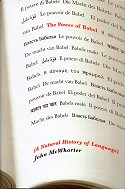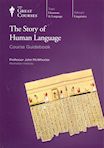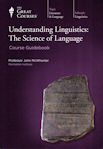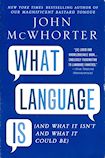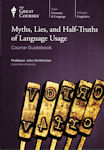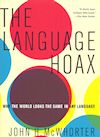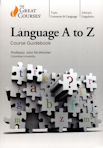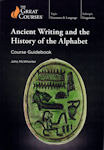Along the way we learn how English absorbed French at two stages of its history, giving us the Norman French ‘warranty’ and the standard French ‘guarantee’, that Japanese has been infused with Chinese vocabulary at three distinct periods, and why Danish, Norwegian and Swedish can be regarded as three dialects of Scandinavian.
Witty, brilliant and authoritative, this book is a must for anyone who is interested in language, as sheerly enjoyable as non-fiction gets. The Power of Babel is a wonderful guided tour of language and languages, as sharp and thought-provoking as Steven Pinker’s The Language Instinct and as entertaining as Bill Bryson’s Mother Tongue.
This is a highly readable and very informative account of language, from its dawn to the present day. There is technical meat about specific languages, their relationships, and how they have changed, all written in a very accessible style, including some laugh-out-loud funny acidic footnotes and asides commenting on various components of popular "culture" and features of the languages.
McWhorter explains why we shouldn’t really even talk about a "language", but rather about "dialects", and how dialects evolve, why some become "the standard", and why the dialects considered to be part of some particular languages are more divergent than other supposedly separate languages. The excursions into how languages change is fascinating. Word inflections (like verb endings) used to be completely separate words that got munged together; word tones are then the relics of such endings that in turn gradually disappeared. As an example of how extreme these changes can be, he describes how peponwi, the word for winter in Proto-Algonquian, became, with a succession of only small changes, the word aa' in Cheyenne (the dash represents a glottal stop), all in about 1500 years.
Different languages choose to distinguish different things, and what they choose is pretty arbitrary, and often unnecessary (since other languages manage without them). "Evidential markers" require each factual statement to be accompanied by evidence of how you know that ("I heard it happen", "I saw it happen", "I was told it happened"). Some languages distinguish "having" a head (inalienable) from "having" a chair. Not all languages mark definite and indefinite nouns: "the" is a weakened form of "that", marking a specific thing, whereas "a" is a weakened form of "one", marking a general thing, which have become required for everything, in English. And so on, and so on.
There’s a lot of fascinating discussion about pidgins (partial languages developed where people speaking different languages need to communicate) and creoles (what happens when pidgins are turned into full languages with grammar and so on). One point made is that languages of so-called "primitive" peoples tend to be ornate and baroque and complicated (the Fula language in particular, with its 16 arbitrary "genders", noun markers varying arbitrarily within and between genders, and the adjective markers varying differently, sounds a real nightmare), whereas the "tall buildings" languages tend to be simpler, because their rough edges have been smoothed off (undergone a degree of pidginisation) by generations using them as second languages. It seems to be the lot of many of these less widely-spoken languages to go extinct – and even if they can be kept "live" by cultural demand and teaching, they too will probably get simplified, for similar reasons.
Despite the popular accounts of "language family trees", implying pure branching, McWhorter shows how in fact there is a lot of melding, mingling, and cross-fertilisation in languages. Even ignoring the extremes of pidgins and creoles, which mix components of the progenitor languages, "ordinary" languages undergo this as well. Neighbouring languages can share vocabulary, and grammar. We have only to look at English, a Germanic language but with a large French, Latin and other vocabulary: a full 90% of English words come from other languages!
Then there is the effect of writing. It has to some extent "frozen" literate languages, greatly reducing (although not stopping) their rate of change. But it has effected a new kind of change on them: written language tends to develop a different style, with longer sentences and more subordinate clauses. This more formal style then gets picked up in the spoken language to some extent, too.
And there’s much more. All in all, this is a highly informative account of language, written in a lucid, enjoyable and accessible style. Recommended.
